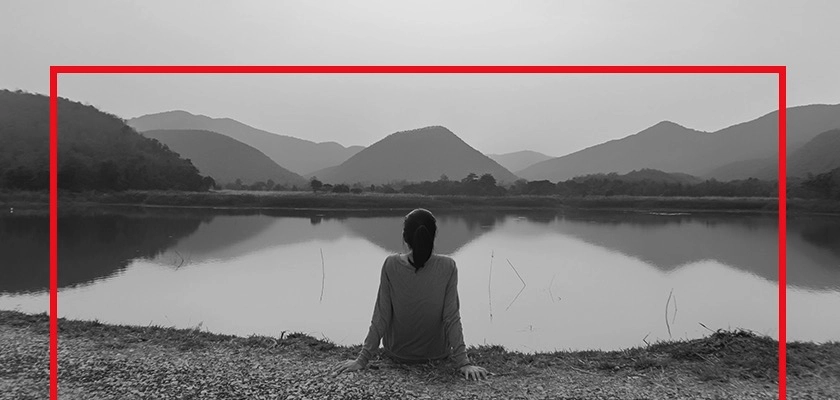The Appropriation of Native American Design
Native American designers have to navigate the complexities of the fashion industry to have their voices heard and control the imagery associated with Native American culture.

Can you name any Native American fashion designers?
Could you distinguish designs created by a Native American artist in the fashion industry from those of a non-native designer?
Unless you are a fashion enthusiast who focuses on Native fashion, you probably can’t. Most Americans’ ingrained ideas of what Native art and design should look like extend to Native American fashion.
As a result, Native American designers must navigate the complexities of the fashion industry to have their voices heard and control the imagery associated with Native American culture. In addition to the challenges all fashion designers face, Native American designers have to combat appropriation of their designs and their tribes’ imagery.
Because Native American design is seen as a monolith, many non-natives in the industry claim that they use Native American imagery as an inspiration point. Often, they are blatantly stealing the imagery.
Fashions designers Bethany Yellowtail and Jamie Okuma, as well as artisans with Eighth Generation, are just a few who are fighting against this laissez-faire attitude toward appropriation of Native design while showing that Native design is alive and evolving.
Bethany Yellowtail, a fashion designer based in Los Angeles, found herself in a situation where another designer had appropriated one of her designs for Fashion Week. This designer’s entire collection was “inspired” by traditional Native American fashion. However, one of the dresses, although different in color and material, had the same cut and design as one of Bethany Yellowtail’s dresses from the collection she created a year before. Because Yellowtail is an independent designer, her only platform to call out this thief was through social media. Fortunately, the public responded to and amplified her post, calling out the designer for stealing Yellowtail’s work.
Jamie Okuma, an artist and fashion designer known for her beadwork, also fights against this type of plagiarism. Okuma understands the appreciation of Native designs. As a designer, she sees the formal aspects that draw designers to Native symbols, but she rejects the blatant theft of designs without acknowledging their origins or understanding their symbolism. She experienced plagiarism when a toy company sold a custom doll-wearing cloth boots that looked like a pair of beaded boots she designed for a museum. For Okuma, the boots she designed had specific details and meanings. By the time she discovered this appropriation, the company had sold hundreds of the limited-edition doll made to look like it was Native American. On her social media and through her work, she promotes other artists and the contemporary views of Native art to help combat this kind of theft.
There are other Native-owned companies that are fighting back against experiences like Yellowtail’s and Okuma’s. Eighth Generation sells, promotes, and supports Native artists to bring attention to their works and combat the theft many are experiencing. By bringing select artists together, the company is able to promote them under the Eighth Generation name and deter non-native companies from stealing Native artists’ designs. The company also works on educating the public about the Indian Arts and Crafts Act of 1990. This act was developed and updated to protect the marketing aspect of Native art and prevent non-natives from falsely claiming to be authentic Native art. However, the act has many loopholes and is only weakly enforced.
Appropriation, appreciation, and theft are not new to the art world—or to Native American culture. However, in spite of the Indian Arts and Crafts Act, individuals and large corporations continue to coopt the designs of Native American artists. As consumers, we must use the resources available to us to push back against this theft and support the work of Native artists.
- Describe what you imagine when you think of Native American fashion. After you have written your description or found images that represent that idea, do a search for current Native American designers. How has Native American fashion stayed the same over time? How has it evolved?
- Research the Indian Arts and Crafts Act of 1990. How does the act protect Native American artisans? Does the act go far enough to protect artists? Explain your answer.
- How can we combat theft and inappropriate appropriation of Native American designs?
References
Denver Art Museum. “Who Does This Honor? — ‘Who Owns Culture?’ Symposium (2019)”. YouTube. Uploaded 21 May 2020, https://www.youtube.com/watch?v=AKDk_HiP_Bw.
The Indian Arts and Crafts Act of 1990. U.S. Department of the Interior. 16 November 2021, https://www.doi.gov/iacb/act.
Indie Lens Storycast. (2018). Alter-Native Ep. 1 “Bethany Yellowtail: Sun Road Woman and Fashion Designer”. Uploaded 27 February 2018, YouTube. https://www.youtube.com/watch?v=81N1zeq85c8.
Resources for challenging cultural appropriation. Eighth Generation. n.d., https://eighthgeneration.com/pages/resources-for-challenging-cultural-appropriation.



